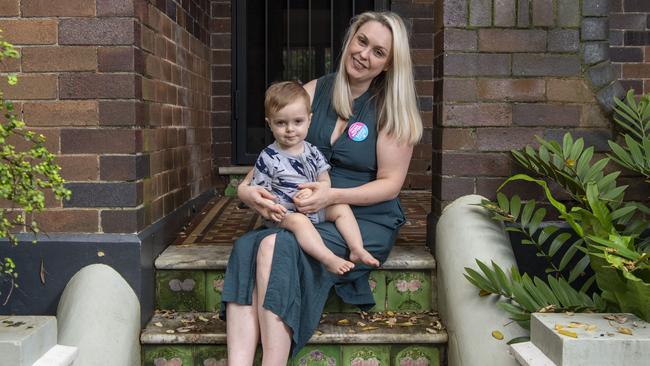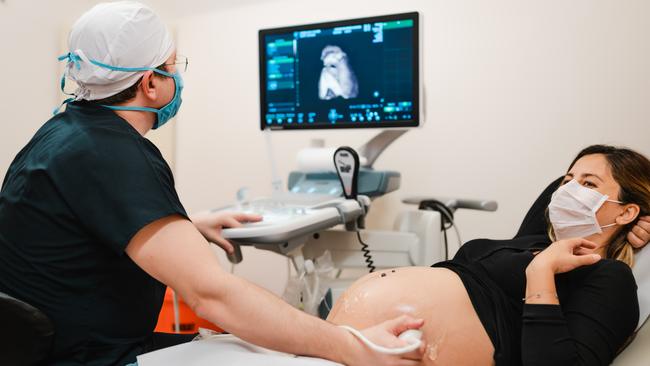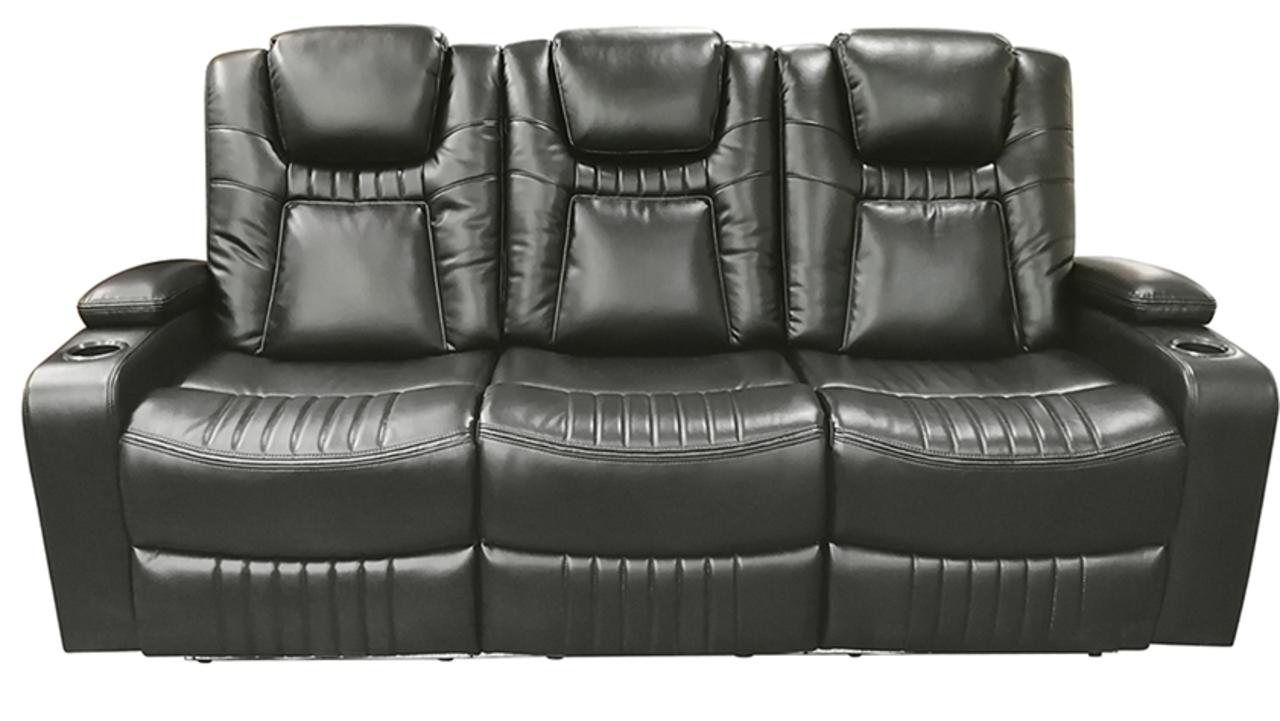National midwife crisis: Mums left to deliver their own babies
Stressed midwives are working 18 hour shifts and suffering post-traumatic stress as critical staff shortages places the lives of mums and babies at risk.

National
Don't miss out on the headlines from National. Followed categories will be added to My News.
Babies are at risk of brain damage and mothers are sustaining lifelong permanent injuries because of a critical nationwide shortage of midwives.
More than 2000 jobs are currently vacant across public and private hospitals, leaving remaining staff working obscene hours — sometimes double shifts, spanning 18 hours — to plug gaps.
The situation is so dire, stressed midwives are quitting the profession entirely.
A News Corp investigation has also found:
•women are often giving birth on their own;
•newborns are going unfed for up to 12 hours;
•the nurse to patient ratio can be as high as one to 16 in extreme cases; and
•some mothers are discharged after just 43 hours.
“Women can end up with quite significant bladder prolapse as well as a cervical prolapses and third or fourth degree perineal tears because the care was not given to them and that is lifelong for them,” one midwife said of the staff shortage.
“We do try to provide monitoring of the baby but if the midwife isn’t in the room to listen to the heart rate and monitor that, and something is missed we know that the outcome of potential brain injury to that baby’s very high,” another said.
Some babies with low blood sugar could have died because they were not being properly monitored, multiple midwives who were reduced to tears told us.
At one NSW hospital, a baby had to be resuscitated after it was smothered by its sleeping father in a unit where midwives were working beyond safe capacity staffing levels.
A midwife at a country hospital, also in NSW, said it was now providing only minimum care.
“Two staff and 17 patients, plus then babies on top. We have two midwives to six labouring women. We don’t give the best care that we can potentially give. Things get missed, obviously,” she said.
Sydney Midwife Zoe Edwards, who recently resigned from her job, said: “We love our job, a lot of us are so passionate about it but providing the care that we wanted to give is not possible in our jobs at the moment.”

A midwife at a major Sydney hospital said: “I’ve come onto a shift where they’ve been short staffed, and there’s babies that haven’t fed for like 10 or 12 hours because the midwife just hasn’t had a chance to go into that room”.
Mothers are being sent home within 43 hours of giving birth to free up beds. Pregnant women who require emergency birth inductions are having them delayed because there are not enough beds in maternity wards.
Most midwives are working regular overtime and 18 hour shifts are common.
Queensland midwife Kath Angus posted on Twitter earlier this month:
“Anyway, I’m off to work a 17 hour shift. I don’t know what’s more dangerous: me working at those levels of fatigue, or a team so understaffed that they can’t carry out safe care. We seem to be heading towards a place where both are happening”;
Another NSW midwife said 18 hour shifts led to medication and other errors.
“People working 18 hour shifts, is that is that really safe? Like what industry allows that when you’re giving medications? You know, you’re dealing with emergencies,” the midwife said.
“The (NSW) Premier just recently had a baby, would he like to know that his wife was being looked after by someone on their 17th hour at work?”
Nationally the number of practising midwives plunged by 542 in 2021 at the same time as the number of older mothers increased, caesarean rates grew and more women developed gestational diabetes.
And job search website SEEK has more than 2300 vacancies for midwives being advertised.

The private sector is also affected.
Sydney’s Hurstville Private Hospital has been trying to hire midwives for more than a year.
“Despite our best efforts, and the offer of enticing benefits including above-Award wages, retention bonuses, relocation fees, and the opportunity to experience the full range of Maternity services in a well-resourced setting, we’re still struggling to find the right candidates,” Hurstville Private CEO Lloyd Adams said.
A spokesperson for retiring Health Minister Greg Hunt said last month Medicare items were expanded to enable professional midwives to provide high-quality maternity care plans to manage the care for expectant mothers throughout their pregnancy journey.
Money was also allocated to support the development of collaborative care models for maternity services in rural and regional areas and fund a Senior Midwifery Adviser.
Labor Leader Anthony Albanese last week launched a new National Nurse and Midwife Health phone service to be used by nurses and midwives who are stressed levels, exhausted or anxious, or are struggling with mental health.
It would provide free, confidential and independent advice, information, treatment and specialist referrals.
NSW HOSPITALS STRUGGLING TO EMPLOY MIDWIVES
While NSW has ratios of one nurse to four patients in its general hospital wards there are no such ratios for maternity wards and babies are not counted as patients.
Almost every health district in the state has large numbers of unfilled vacancies for midwives.
The South West Sydney Local Health District had 110 full time vacancies for midwives in March, the NSW Nurses and Midwives’ Association was told.
“There is a crisis in midwifery and the NSW Ministry of Health seem incapable of admitting how bad it has become,” General Secretary, NSW Nurses and Midwives’ Association Brett Holmes said.
The union wants a ratio of one midwife to three patients to be introduced into post-natal wards and they want babies to be counted as patients.
A study of nurse to patient ratios in Queensland found they saved lives and the health system made cost savings from the ratios that were worth twice what it cost to pay the wages of the extra nurses.
A spokesperson from NSW Health said the department used an evidence-based midwifery workforce planning methodology to determine the staffing required in maternity services which provides for one-to-one care during labour.
“Despite a declining birthrate, between 2012 and 2021, the nursing and midwifery workforce in NSW increased by 9599 full-time equivalent staff, or 23 per cent, to 51,794 FT,” the department said.
“The NSW Government is also investing in a further 5,000 nurses and midwives from 2019-2022 under a record $2.8 billion boost to frontline staff and remains on track to meet this commitment.”
VICTORIAN HOSPITAL FORCED TO CLOSE
In Victoria, the maternity ward at Portland Hospital had to close earlier this year because they could not get enough staff.
And staff shortages also saw the state imposed a six-week pause on maternal checks for babies during the state’s hospital “code brown” brought on by Omicron outbreak in January.
Although the pause has lifted some local councils still don’t have enough midwives to check babies older than eight weeks.
Victoria legislated nurse and midwife to patient ratios in 2015 which include post-natal ward ratios of one midwife to four mothers on morning and afternoon shifts, and one midwife to six mothers on night shift.
In July last year the Victoria state government made a $13.2 million investment in maternity services, after reports of understaffed maternity wards and women giving birth in emergency rooms and corridors. That funding has now run out.
A spokesperson for the Victorian health department said birthing services at Portland Hospital have been temporarily diverted for up to three months due to a shortage of midwives to allow time to recruit more and investigate the best model of maternity care for the region.
The pandemic had delayed surgeries and added to pressure on emergency departments.
“Despite a nationwide midwife shortage, we are continuing efforts to recruit at home and overseas so we can safely restore birthing services as soon as possible,” the spokesperson said.
QUEENSLAND HOSPITAL LOSES MATERNITY SERVICE
Last year Gympie Hospital closed its children’s ward and one mother said when she had a caesarean there were only two midwives when usually the hospital had between four to six.
After Chinchilla Hospital lost its maternity service in January, one baby was born on route to Dalby hospital.
Queensland introduced nurse to patient ratios of one nurse to four patients in 2016 and on night shifts ratios of one nurse to seven patients in 27 public hospitals.
An evaluation of the ratio system involving 400,000 patients between 2016 to 2018 found there were 145 fewer deaths, 255 fewer readmissions, and 29,222 fewer hospital days than if they had not implemented the policy.
The measures also had direct cost benefits to the state’s public health system of about $70 million dollars over the study period, researcher Professor Patsy Yates found.
“In fact, we saved twice as much as it cost for the extra staff, so this shows a clear economic benefit for early intervention and good nursing care,” she said.
A Queensland Health spokesperson said “a midwifery workforce shortage has been declared internationally”.
“Work is currently underway to examine options for maternity care ratio,” the spokesperson said.
More than 10,600 full-time equivalent additional nurses and midwives have been recruited since 2015, which includes more than 2560 graduate nurses and midwives starting in Queensland hospitals in 2022.
Queensland Health often employs midwives through recruitment agencies or through offering of contracts for specific regional and rural locations.
More Coverage
Originally published as National midwife crisis: Mums left to deliver their own babies





